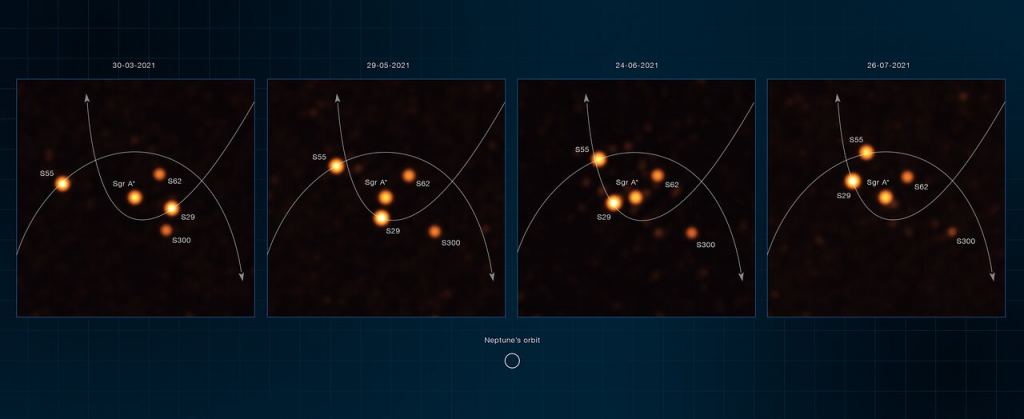The theory of general relativity (GR), proposed by Einstein over a century ago, remains one of the most influential scientific postulates. GR explains how the presence of massive objects alters the curvature of spacetime and serves as the foundation for our cosmological models.
Sagittarius A* (Sgr A*), the supermassive black hole at the center of the Milky Way, has been a focal point for testing GR under extreme conditions.
The BlackHoleCam Initiative and Testing General Relativity
The Event Horizon Telescope (EHT), an international collaboration of astronomers and observatories, captured the first-ever images of Sag A* in 2019, following the success of imaging the supermassive black hole in M87.
The BlackHoleCam initiative, launched in 2014 by the European EHT members, aims to deepen our understanding of supermassive black holes (SMBHs) through radio imaging, pulsar observations, astrometry, and GR.
The Ideal Laboratory: Pulsars Orbiting Sagittarius A*
Pulsars in binary systems provide a unique opportunity to test predictions made by GR and explore properties that are otherwise difficult to measure. Observing pulsars in close orbit around Sag A* allows researchers to examine the no-hair theorem, which suggests that the matter forming a black hole is inaccessible, and the cosmic censorship conjecture (CCC), which theorizes about singularities in GR.
The Search for Pulsars Near the Galactic Center
Efforts have been made in recent decades to discover pulsars located within a radius of about 240 light-years from the galactic center (GC). These searches have yielded promising results, including the detection of PSR J1745–2900, a radio-emitting magnetar. Improvements in radio telescopes and data analysis techniques have expanded the potential areas for pulsar searches in the GC region.
Overcoming Challenges: High-Frequency Pulsar Searches
To mitigate the effects of interstellar dispersion and scattering, researchers employ the strategy of searching for pulsars at frequencies higher than normal (over ten gigahertz) and with longer integration lengths. However, the steep emission spectrum of pulsars poses challenges, limiting the search to isolated pulsars with flatter spectra. The BlackHoleCam team aims to overcome these constraints using the world’s largest and most sensitive telescopes operating at millimeter wavelengths.
Utilizing Powerful Telescopes: The BlackHoleCam Approach
The BlackHoleCam consortium, in collaboration with the EHT, utilizes telescopes such as ALMA, CSO, KPNO, GTM, and IRAM to observe binary pulsars orbiting Sag A*. The same very long baseline interferometry (VLBI) technique employed to capture the first image of Sgr A* is utilized to detect these pulsars. The phased array of the EHT components further enhances sensitivity and minimizes site-specific interference contamination.

Combining VLBI Imaging and Pulsar Observations
The compatibility of VLBI imaging and pulsar observations using the same raw data product from each array element presents new opportunities. The BlackHoleCam initiative paves the way for simultaneous VLBI imaging and pulsar studies. This integration promises to increase sensitivity and mitigate interference, opening up avenues for advanced research.
Expanding Horizons: From Imaging Black Holes to Fundamental Physics
The EHT’s breakthrough in imaging black holes has created possibilities that extend beyond its original mission. The unparalleled sensitivity of these arrays offers the potential to test the laws of physics under extreme conditions, providing fresh insights into the fundamental principles governing the universe.
Conclusion: Unleashing the Potential of Extreme Astrophysical Studies
The quest to map the black hole at the center of the Milky Way through pulsar observations is an exciting frontier in astrophysics. By utilizing the power of VLBI imaging and the sensitivity of advanced telescopes, the BlackHoleCam initiative holds the key to unlocking new realms of knowledge about black holes and pushing the boundaries of our understanding of the universe. As technology advances, we are poised to embark on a remarkable journey of discovery, exploring the laws of physics in the most extreme cosmic environments.
